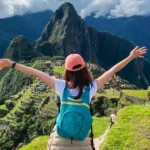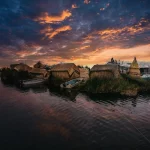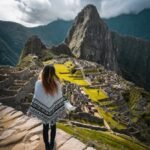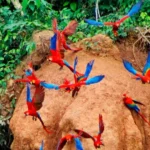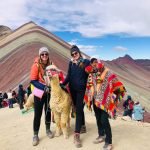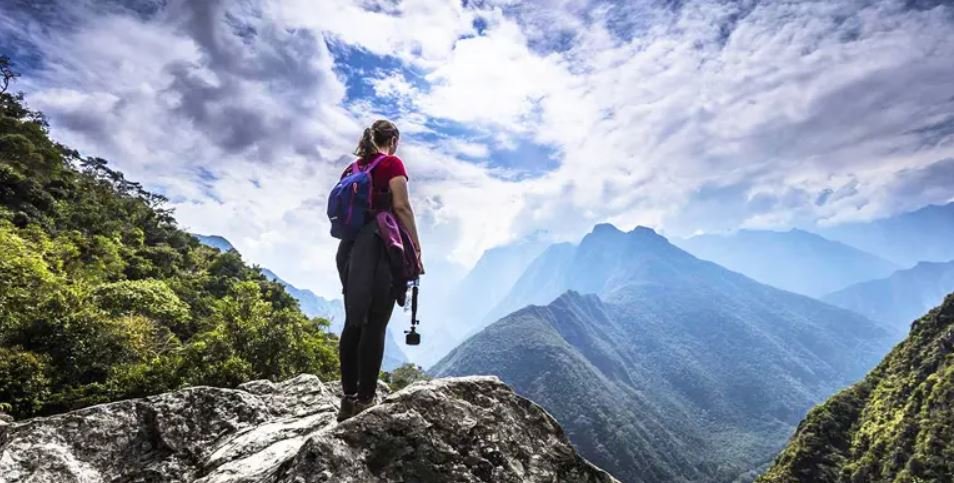
Inca Trail to Machu Picchu: The road to the lost city

📋 Índice de Contenido
- 1 What is the Inca Trail to Machu Picchu?
- 2 History of the Inca Trail to Machu Picchu
- 3 Machu Picchu: The Lost Citadel of the Incas
- 4 Archaeological sites on the Inca Trail to Machu Picchu
- 5 Inca Trail Routes to Machu Picchu
- 6 Difficulty and preparation for the Inca Trail to Machu Picchu
- 7 Permits and Regulations for the Inca Trail
- 8 Season and weather on the Inca Trail to Machu Picchu
- 9 Tips for the Inca Trail to Machu Picchu
- 10 What to bring on the Inca Trail to Machu Picchu
- 11 Training for the Inca Trail to Machu Picchu
- 12 How to book the Inca Trail
- 13 Frequently Asked Questions about the Inca Trail to Machu Picchu
Have you ever dreamed of walking the same steps as the ancient Incas? Can you imagine what it would be like to walk along ancient trails surrounded by breathtaking nature? Are you ready to embark on one of the most famous trekking trails in the world? The Inca Trail to Machu Picchu is an epic adventure that combines millennial history, breathtaking landscapes, and a thrilling physical challenge. Get ready to immerse yourself in the grandeur of the Inca empire and discover the secrets of the lost citadel of Machu Picchu.
What is the Inca Trail to Machu Picchu?
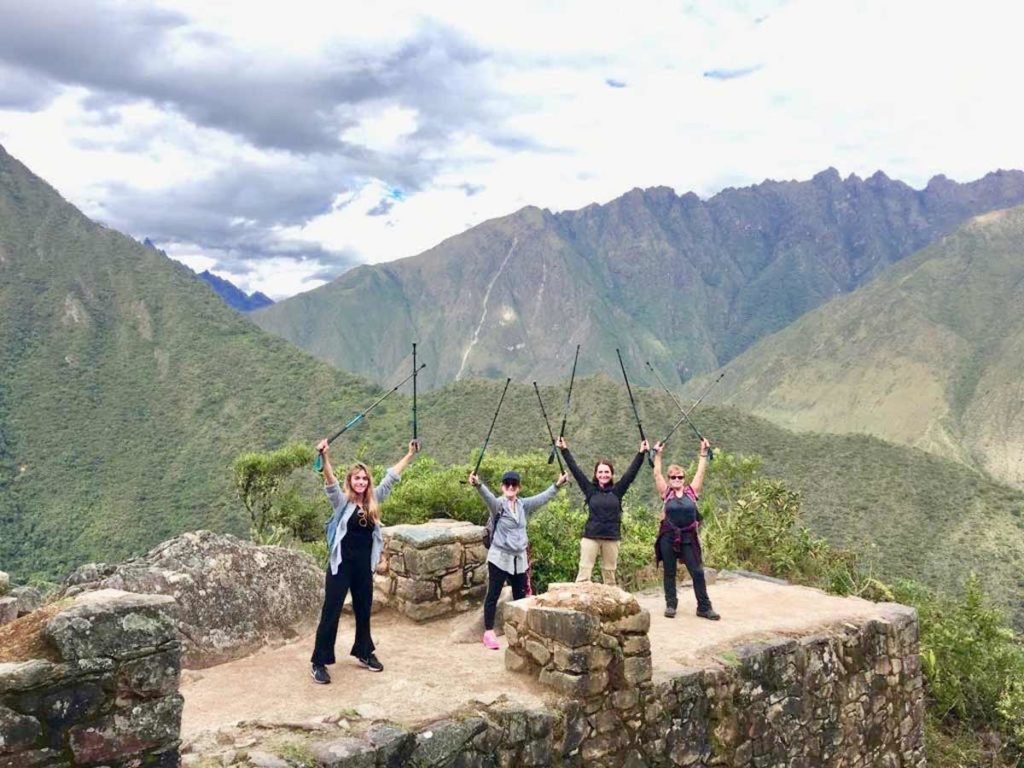
The Inca Trail, also known as the Classic Inca Trail or Inca Trail to Machu Picchu. It is a hiking trail of approximately 43 kilometers that leads to the archaeological wonder of Machu Picchu.
This trail is part of the extensive network of roads built by the Incas that stretches across six countries in South America. The current route was once an important communication and trade route for the Inca empire, and today it is one of Peru's main tourist attractions.
A journey through history
Along the way, travelers will be able to immerse themselves in the rich history of the Incas. You will discover impressive archaeological sites such as Runcuracay, Sayacmarca, Phuyupatamarca, and Wiñay Wayna, which were important administrative, religious, and resting centers for the Incas.
History of the Inca Trail to Machu Picchu
The Inca Trail was built around the 15th century by the Incas as part of their vast road system.
These routes allowed for troop movement, trade, and communication throughout the empire. The Inca Trail to Machu Picchu connected the citadel with the Inca capital, Cusco, and other important cities of the empire.
After the Spanish conquest in the 16th century, the Inca Trail fell into oblivion and was reclaimed by nature. It wasn't until the early 20th century that explorer Hiram Bingham "rediscovered" Machu Picchu and the path that led to it.
Machu Picchu: The Lost Citadel of the Incas
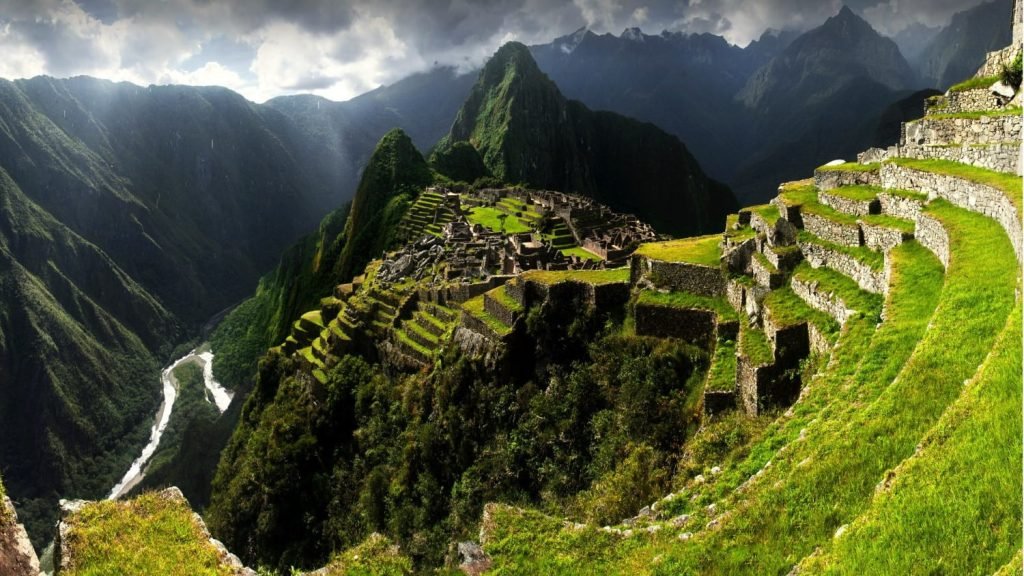
Machu Picchu, one of the Seven Wonders of the Modern World, is the final destination of the Inca Trail and the main attraction of this trek.
This impressive Inca citadel, built around the year 1450. It is hidden in the slopes of the Andean mountains at 2,430 meters above sea level. Its impressive architectural ruins, cultivation terraces and strategic location in the middle of a stunning natural environment leave visitors breathless.
Inca engineering at its finest
The ruins of Machu Picchu are a testament to the ingenuity and skill of the Incas as builders. From the agricultural terraces to the stunning, perfectly carved stone blocks, every detail of the city will take visitors' breath away.
Archaeological sites on the Inca Trail to Machu Picchu
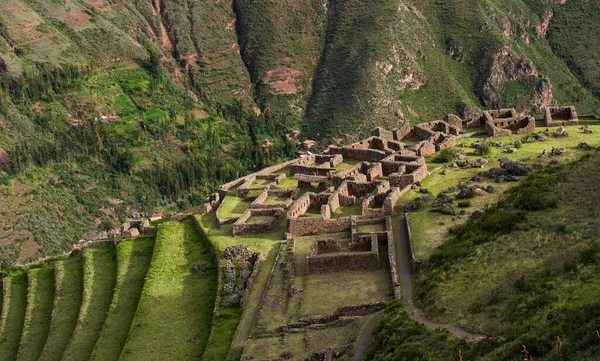
Along the Inca Trail, trekkers will come across numerous archaeological sites that provide fascinating insight into Inca life and engineering.
Some of the most prominent sites include:
- Llactapata: A small Inca town with agricultural terraces and ceremonial buildings.
- Runkurakay: A complex of baths and chambers built next to a spring.
- Sayacmarca: An Inca fortress with impressive constructions and a breathtaking panoramic view.
- Phuyupatamarca: A site with impressive cultivation terraces and ritual baths.
- Intipuncu (Sun Gate): The iconic gateway to Machu Picchu.
Inca Trail Routes to Machu Picchu
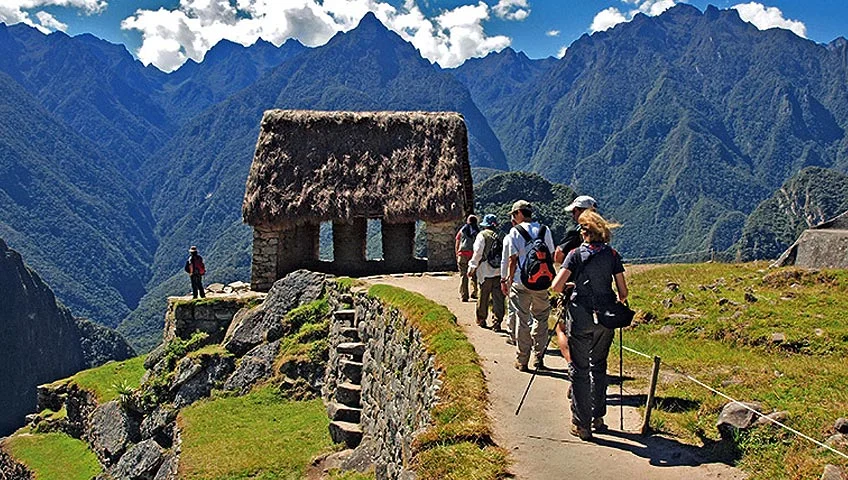
The Inca Trail to Machu Picchu offers various routes and durations to suit different fitness levels and time availability.
Classic Inca Trail (4 days / 3 nights)
This is the traditional and most popular route, covering the entirety of the 43 kilometers of the Inca Trail. It starts at kilometer 82 of the Cusco-Aguas Calientes railway line and passes through several archaeological sites before arriving at the Sun Gate in Machu Picchu at dawn on the fourth day.
2 Days / 1 Night Inca Trail
This shorter route starts at kilometer 104 of the railway line and covers approximately 12 kilometers to Machu Picchu. It's a more accessible option for those with less time or fitness, but still offers the thrill of hiking the Inca Trail.
1-Day Inca Trail
For those with limited time and energy, there is the option to hike alone the last stretch of the Inca Trail from the Sun Gate to Machu Picchu. This route of approximately 6 kilometers can be completed in about 3-4 hours.
Other Alternative Routes
In addition to the classic routes, there are other options for those looking for a more challenging or less-traveled experience. The Salkantay Route, for example, offers stunning views of snow-capped Salkantay and a more intense hike. While the Lares route allows travelers to immerse themselves in the living culture of the Andean communities. The Inca Jungle route, on the other hand, is ideal for the adventurous. For those looking for a thrilling and adrenaline-filled experience. This route combines hiking, mountain biking and canoeing. Taking travelers through stunning jungle landscapes, rivers, and mountains before arriving at Machu Picchu.
Difficulty and preparation for the Inca Trail to Machu Picchu
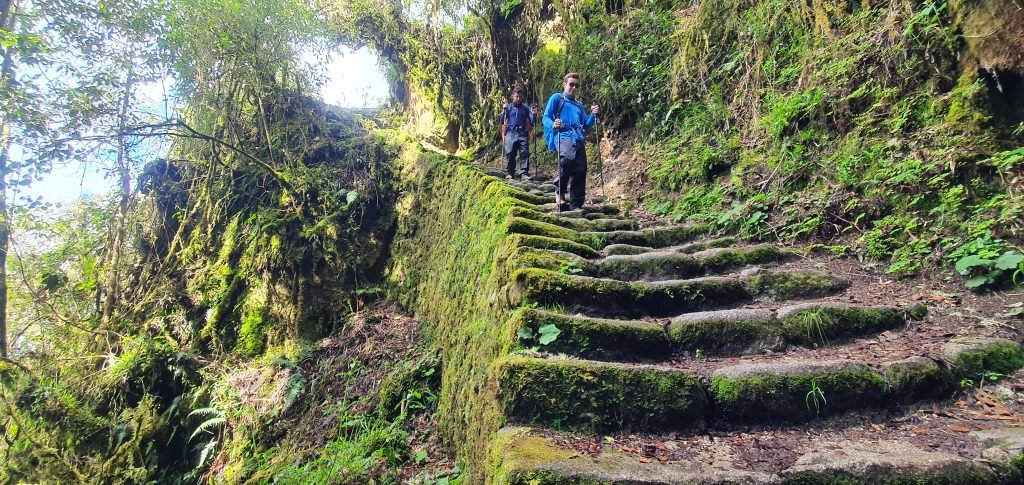
The Inca Trail to Machu Picchu is a challenging trek that requires good physical and mental preparation.
The route involves steep ascents and descents, narrow passes, and altitudes of up to 4,200 meters above sea level. Lack of acclimatization to altitude can cause symptoms of altitude sickness, such as headaches, nausea, and fatigue.
It is highly recommended to do endurance training, such as hiking, cycling, or running, before embarking on the Inca Trail. It's also important to wear proper clothing and footwear for walking, as well as trekking poles to help with balance and stability.
Permits and Regulations for the Inca Trail
Due to the growing popularity of the Inca Trail and the need to preserve the trail and archaeological sites, mandatory regulations and permits have been implemented.
- Only a limited number of trekkers are allowed per day on the Classic Inca Trail, so it's essential to book well in advance, especially during the peak season from May to September.
- All walkers must hire a tour guide licensed by the Peruvian government and travel with a licensed tour operator. Self-guided hiking and camping outside of designated campgrounds are not permitted.
Season and weather on the Inca Trail to Machu Picchu
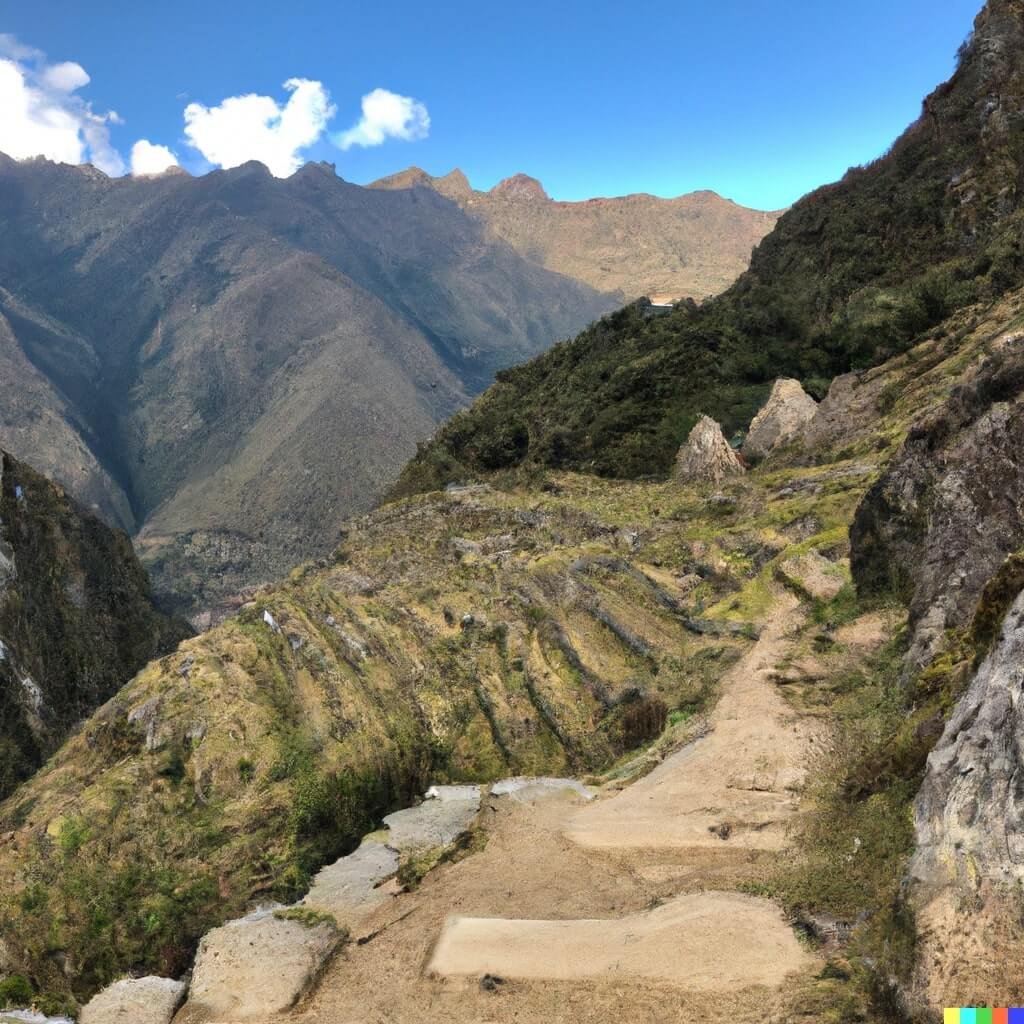
The ideal season to hike the Inca Trail is during the dry season, which runs from May to September.
During these months, weather conditions are more favorable, with sunny days and less chance of rain. Temperatures range from 15°C to 25°C during the day, but can drop significantly at night at higher altitudes.
The rainy season, from October to April, can present more challenging conditions, with slippery trails and an increased risk of closures due to landslides or flooding. However, the months of April and October are considered a "transition season" with fewer tourists and lower fares.
Tips for the Inca Trail to Machu Picchu
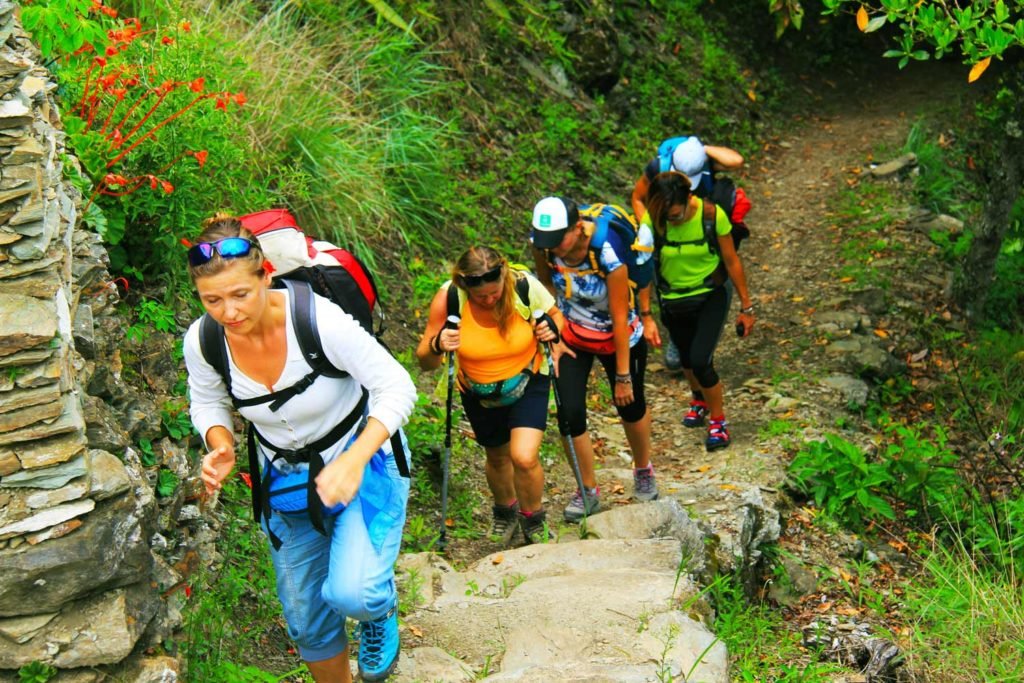
Here are some key tips to have a successful Inca Trail experience:
- Acclimatize to the altitude: Spend a few days in Cusco (3,400 m.a.s.l.) before starting the trek to adapt to the altitude.
- Bring proper equipment: Warm layered clothing, sturdy trekking boots, sleeping bag, trekking poles, protection
solar, headlamp, first aid kit, etc.
- Stay hydrated: Drink plenty of water and warm fluids to combat the effects of altitude.
- Hire a certified guide: Guides know the route, can help in case of emergency, and enrich the experience with their historical and cultural knowledge.
- Go at your own pace: Don't feel the pressure to keep up with other walkers. Walk at your own pace and take breaks when you need to.
- Respect the rules and regulations: Follow all the rules set to protect the Inca Trail and its archaeological sites.
- Be respectful of the environment: Leave no waste, respect the flora and fauna, and minimize your impact on the environment.
What to bring on the Inca Trail to Machu Picchu
Packing light and only the essentials is key to a comfortable trek on the Inca Trail. Here are some recommendations:
- Trekking backpack (30-50 liters) with a waterproof cover
- Warm and insulated sleeping bag
- Insulation and mat
- Warm layered clothing (t-shirts, waterproof jacket, trekking pants, etc.)
- Sturdy trekking boots and wool socks
- Cap, scarf and gloves
- Sunscreen, sunglasses, and lip balm
- Reusable Water Bottle & Water Purifier
- Energy Snacks & Protein Bars
- Camera, extra batteries and memory cards
- Basic First Aid Kit
- Trekking poles
- Headlamp and extra batteries
- Documents (passport, Inca Trail permit, etc.)
- Cash (Peruvian soles)
Training for the Inca Trail to Machu Picchu
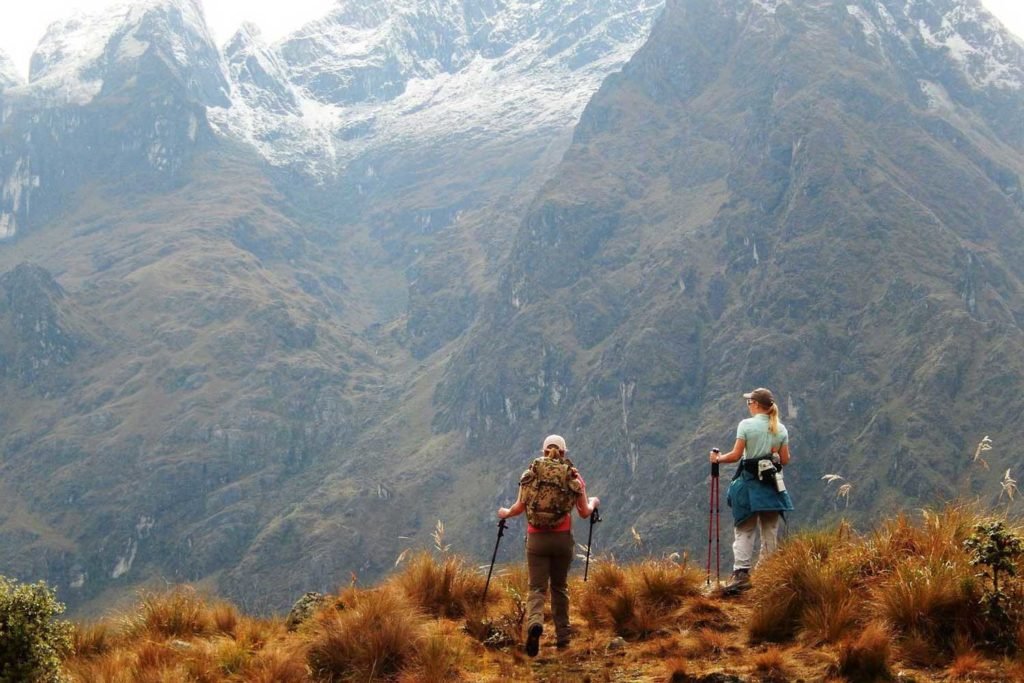
Properly preparing for the physical challenge of the Inca Trail is crucial to enjoying the experience. Here are some training recommendations:
- Endurance walks: Take long walks of 3-5 hours with a loaded backpack to get used to the weight and distance.
- Stair or hill training: Practice going up and down stairs or steep hills to prepare for the ascents and descents of the Inca Trail.
- Strength exercises: Work on strengthening your legs, back, and core with strength exercises to withstand the effort of trekking.
- Cardio exercises: Improve your endurance with activities such as running, swimming, or cycling.
- Practice with trekking poles: Use trekking poles during your training hikes to get used to them.
How to book the Inca Trail
Due to high demand and permit regulations, it is essential to book your Inca Trail trek well in advance. This is especially important if you plan to do it during peak season.
- Choose your preferred route and duration (4-day, 2-day or 1-day Classic Inca Trail).
- Do your research and book with an authorized and reliable trekking agency or tour operator.
- Get your Inca Trail permit, which is mandatory and has limited space.
- Book your flights and accommodation in Cusco before and after the trek.
- Make sure you have travel insurance that covers trekking and adventure activities.
Frequently Asked Questions about the Inca Trail to Machu Picchu

What is the best time to do the Inca Trail?
The dry season, from May to September, is considered the best time to hike the Inca Trail. During these months, the weather conditions are more favorable, with sunny days and cool nights.
What is the level of difficulty of the Inca Trail?
The Inca Trail is considered a moderate to difficult physical challenge, depending on the route chosen. A good level of physical preparation and acclimatization to high altitudes is required.
Do I need a permit to do the Inca Trail?
Yes, it is mandatory to have a permit issued by the Ministry of Culture of Peru to do the Inca Trail. These permits are limited and must be booked in advance.
What should I pack in my backpack for the Inca Trail?
It is essential to bring warm and warm clothing, sturdy hiking shoes, a raincoat, sun protection, a sleeping bag, and a small first aid kit. It is also advisable to bring enough water and energy snacks.
Do I need to hire a tour or can I do the Inca Trail on my own?
Although it is possible to do the Inca Trail independently, it is highly recommended to hire the services of a specialized travel agency. They will take care of permits, local guides, loading equipment, and camping. This will make the experience much safer and more comfortable.
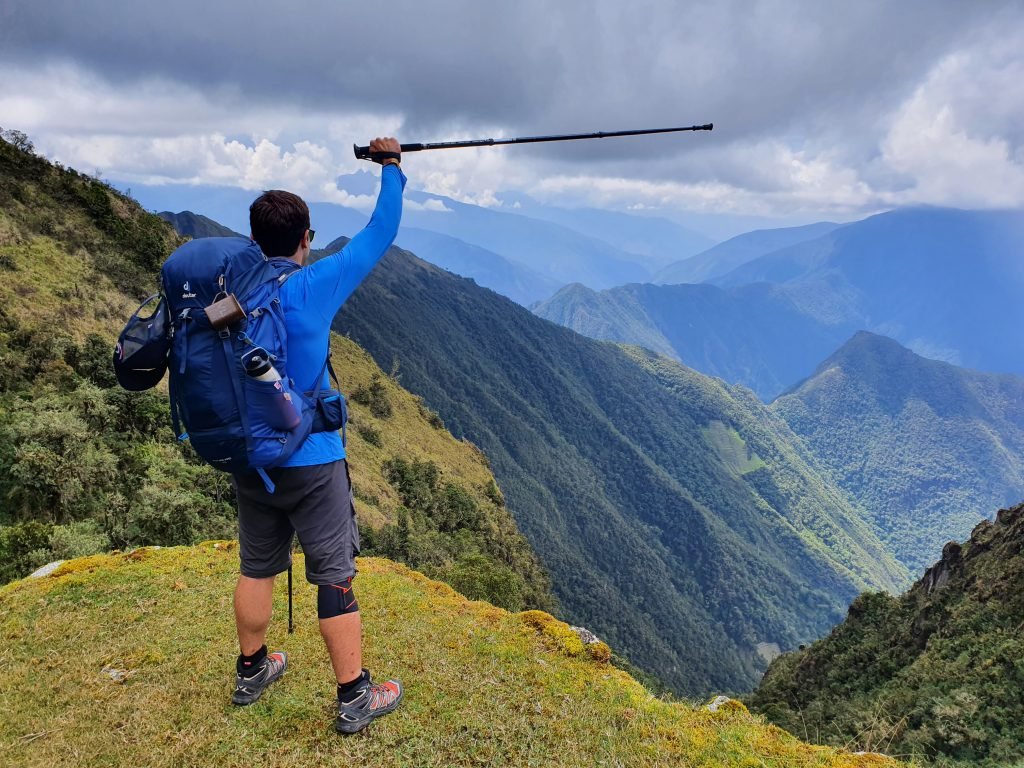
The Inca Trail to Machu Picchu is a lifetime experience that combines history, culture, nature, and an exciting physical challenge. Follow these tips and prepare yourself properly to enjoy this amazing adventure to the fullest. The road to the lost city awaits!
Don't wait any longer to make your dream of hiking the Inca Trail come true. Contact us today and book your adventure to Machu Picchu, the lost city in the heights of the Andes.
Random Posts

Is Machu Picchu worth visiting?

Ayahuasca History

Wildlife Pantanal awaits you for an unforgettable trip

Complete travel guide to Machu Picchu mountain
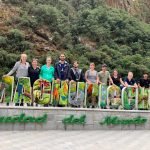
 Español
Español  Português
Português 
 English
English 





